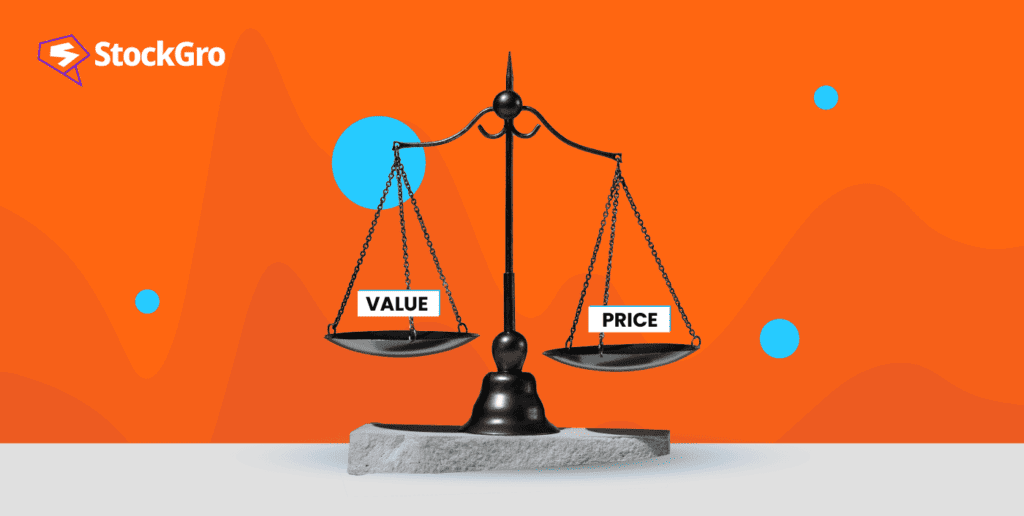
Investors can adopt different styles when it comes to investing in the stock market, including Growth, Value, and Contrarian strategies. One notable approach is Value investing, developed by Benjamin Graham in the 1920s and proven to be an effective wealth-creation tool for many investors, including renowned investors such as Warren Buffet.
But it’s not just individual investors who can capitalise on this approach. Value mutual funds extend the philosophy of value investing into collective investment schemes. Value investing principles can be pursued in a variety of ways with these funds. In this context, we will further explore value funds in India, shedding light on the key aspects and features that set them apart.
You may also like: Mutual funds or stocks: Which is a better investment?
What is a value fund?
Finding undervalued shares is the foundation of value investing. Investors dig deep into a company’s fundamentals, like earnings, dividends, and growth rate, to calculate its “intrinsic value.” This intrinsic value is the stock’s real worth minus any market hype. One considers a stock to be a great investment opportunity if it is trading under its true value. This strategy stands in contrast to growth investing, where the focus is mainly on fast-growing, emerging companies.
According to SEBI, value funds are mutual funds that follow the value investing strategy and allocate at least 65% of their portfolio to stocks. These funds capitalise on market inefficiencies. Sometimes, stocks are incorrectly priced due to information gaps or short-term market conditions. When the market adjusts, these undervalued stocks often rise in price, providing an opportunity for capital gains. The aim of fund managers is to purchase these stocks for less than their intrinsic worth.
Fund managers in value funds play a critical role. Their job involves rigorous research to find out undervalued stocks. These are often not the stocks making headlines, but they usually have strong fundamentals and may pay dividends.
Who can invest in value funds?
- Long-term investors: Those willing to wait out market fluctuations will find value funds most rewarding. The focus is on long-term growth, not quick wins.
- Risk tolerance: Be prepared for some level of risk. Value funds often buck market trends, investing in lesser-known or unpopular stocks.
- Sound financials: Ideal for those who appreciate investing in companies with strong basics like good earnings and dividends rather than hype.
- Effort saver: Value funds offer a less hands-on approach to investing in solid yet undervalued companies for investors who find the stock-picking process overwhelming .
- Balanced portfolio: Investors already heavy on growth stocks can add value funds for diversification and to weather different market cycles better.
Also read: A guide to value investing in India
How to choose value mutual funds?
Evaluating past performance
It’s important to delve into the fund’s historical performance, particularly over the last five years. This will not only give you an insight into how well the fund has performed but also its resilience across different market cycles. Remember that although past performance can provide useful insights, it does not ensure future success.
Determining investment horizon
Value funds are generally a long-term investment. This is because value stocks may take time to reflect their true worth. Therefore, ensure that your investment horizon aligns with this time frame.
Importance of diversification
Diversification is a key factor in mitigating risk. Ensure a value fund you choose invests in a diverse market cap and sectors. This may result in a higher return on your investment and helps spread the risk.
Assessing risk through ratios
Risk assessment is integral in any investment. To comprehend the risk-adjusted returns, look at indicators such as the sortino Ratio and sharpe Ratio. These ratios give you a quick idea of the excess return you might anticipate in exchange for the increased volatility that comes with holding riskier assets.
Performance across market cycles
Pay attention to how the fund performs in comparison to its benchmark index, both in bullish and bearish markets. A fund that offers consistent returns irrespective of market conditions is generally a more reliable choice.
Managerial experience and performance history
The competence of the fund manager is pivotal. Examine their track record and experience to ensure they have the skills to make sound investment decisions. It’s also beneficial to look at the fund house’s overall performance to ensure their strategies align with your financial goals.
Accounting for costs and turnover
Last but not least, be aware of any additional costs, such as high portfolio turnover ratios. Overspending on purchases and sales of assets can increase transaction expenses, which over time can reduce your returns.
Also read: How to compare stocks? Explore the various tools available.
Benefits of value fund
- Lower risk: Targeting undervalued stocks makes value funds less vulnerable to market volatility. The strategy acts as a cushion during market downturns, reducing the impact on your investments.
- Sectoral boost: These funds often invest in overlooked sectors, helping to bring attention and growth to those areas. It’s a benefit to both your portfolio and the broader economy.
- Intrinsic value and safety margin: Value investing is all about finding stocks trading below their intrinsic value. This creates a “margin of safety,” offering a buffer against potential losses.
- Avoid herd mentality: Value funds typically don’t follow popular market trends, often leading them to overlooked investment gems. This independent thinking is a key trait that has led to the success of famous investors like Warren Buffet.
- Balanced approach: Unlike other funds that chase highly-valued, trendy stocks, value funds aim for a balance between growth and stability. They invest in undervalued stocks with strong fundamentals, providing a calculated path to long-term gains.
Bottomline
Investing in value funds can be a rewarding venture if approached with patience and understanding. These funds focus on companies that are striving for growth but are currently undervalued, making them fertile ground for higher returns in the long term. The fact that value funds often buck market trends to find these gems adds an extra layer of resilience to your portfolio, especially in times of market uncertainty.
Value funds, all things considered, provide a more balanced and less impulsive strategy for investing. The crowd does not sway them and maintains a focus on long-term potential, making them a strong choice for those looking to diversify and solidify their portfolios.

